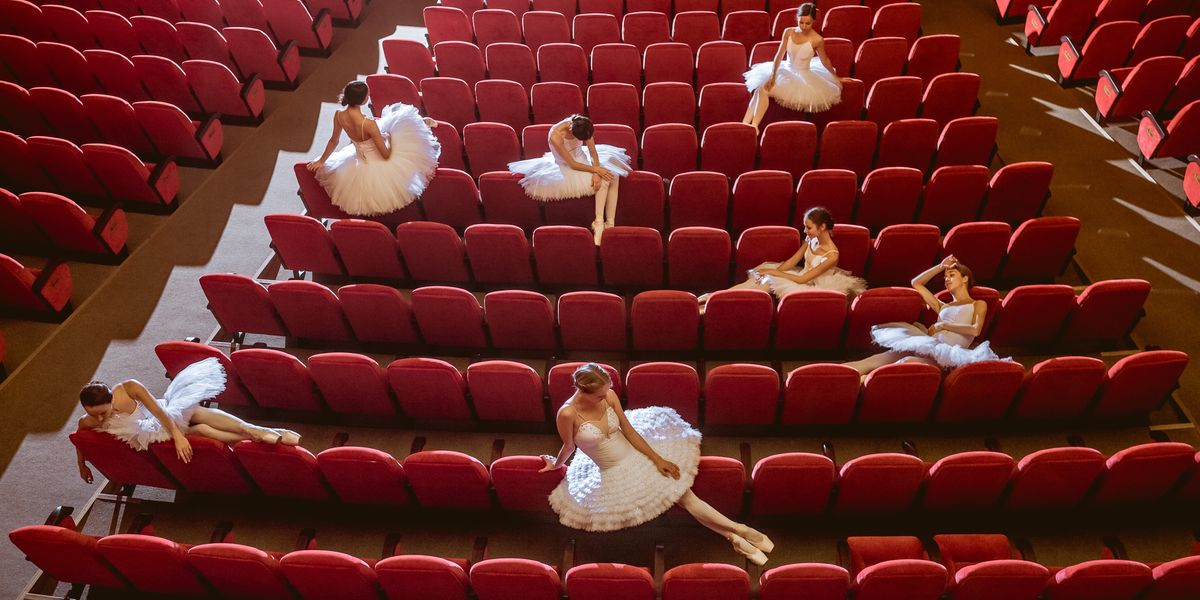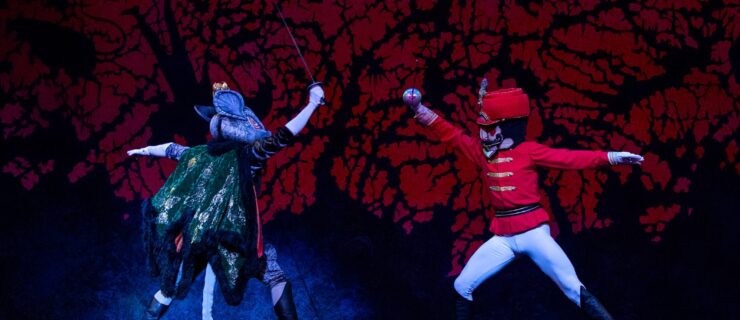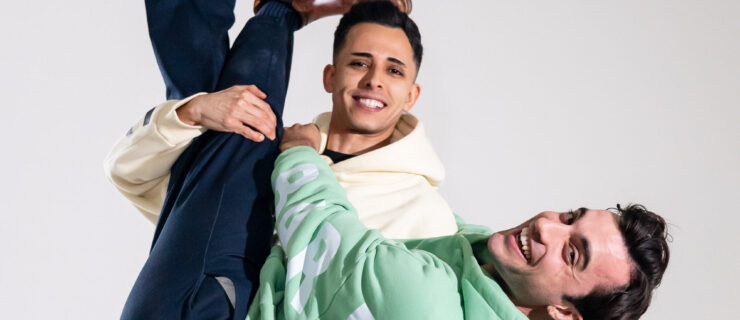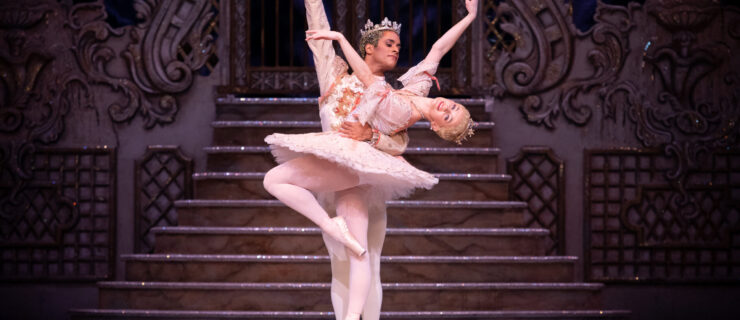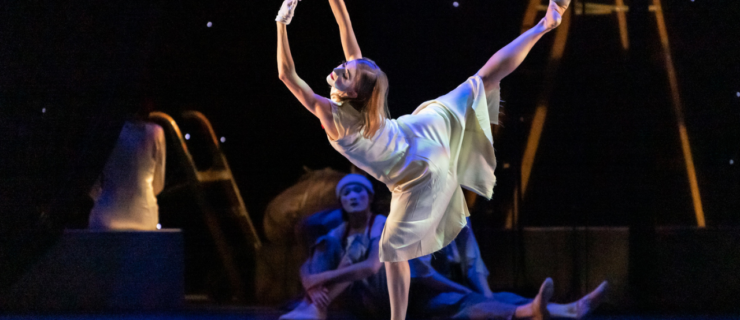What's Ahead for Ballet Companies in the Age of COVID-19?
Let’s be frank: No one knows what’s ahead for the performing arts in the U.S. With COVID-19 forcing the cancellation of nearly a year of performances so far, including many Nutcrackers, ballet companies face a daunting path ahead with no roadmap for how to survive. While schools can offer classes online or in small groups, what does the future hold for companies when it’s not safe to gather large audiences or corps de ballet?
“We are in for a very hard set of months,” says Michael M. Kaiser, chairman of the DeVos Institute of Arts Management at the University of Maryland. “Nothing will change until there’s a vaccine.”
Pointe
set out to find out what the new normal looks like while the virus is with us.
Online Content and Digital Seasons
When COVID-19 hit, it seemed everything moved online that could, from galas to company class. In a recent online panel, American Ballet Theatre artistic director Kevin McKenzie said the company’s May online gala, which did not include much dancing, was well-received but not a financial success. The Washington Ballet’s gala centered on livestreamed performances and was financially successful. But afterwards, artistic director Julie Kent, a company dancer and a gala chairwoman became ill with COVID-19, despite social distancing and other safety precautions.
Can online platforms be a safe, longer-term source of income and artistic outlet for ballet companies?
Marc Kirschner, a founder of the paid performing arts streaming service Marquee TV, says this moment is a line in the sand for companies’ survival.
“Whether or not companies can figure out how to incorporate digital into their strategy is going to decide which will fold,” says Kirschner. “Linking digital programming to data, marketing and operations is a long-term necessity. COVID has only made this more clear.”
He says that rather than put up old footage with rudimentary filming, companies can use this moment to make high-quality captures of live contemporary works. “No one needs to film another Swan Lake. Dance companies need to focus on what makes them different,” he says. “New works are in demand on Marquee TV, and those can be made with smaller casts and filmed in front of a house with 20 percent capacity.”
Kirschner acknowledges that filming can be prohibitively expensive, but stresses that an innovative digital strategy is key for companies to develop and keep audiences now and in the future—and that it’s a mistake for companies to give content away for free.

Sam English, Courtesy Louisville Ballet
Louisville Ballet is trying a paid approach, with a 2020–21 digital season subscription starting at $125. Artistic director Robert Curran is planning a series of dance-art films, works created specifically for digital, rather than presenting filmed live performances. He’s betting that this will expand the company’s artistic horizon in a way that can carry it through the pandemic.
“I’ve wanted to explore this for some time, but we were never able to with all of our other programming,” says Curran. “We hope this will not only engage our subscribers but show the dance world that Louisville is a place where new ideas about ballet are happening.”
Funding this digital season is still something Curran is figuring out, and he’s unsure how much work will be produced. He’s also planning to keep dancers in small pods in hopes of preventing the spread of the virus, but acknowledges illness could derail his plans, as keeping dancers safe is the main priority.

Jaroslav Richter Photography, Courtesy City Ballet of San Diego
Geoffrey Gonzalez, a dancer and resident choreographer with City Ballet of San Diego, found a way to create new digital work without much risk of spreading the virus with his Dark Room Series. He transformed the company’s studio into a black box and filmed solos that he edited into a 15-minute work, where the dancers sometimes appear to be dancing together. The purpose was to have a touchpoint with the audience but also to nurture artistry.
“Quarantine was like my feet were caked in cement,” Gonzalez says. “I had to find a way to work, and so did the dancers. It was about fulfilling physical and spiritual needs as artists.”
He offered the film for free. He says it’s succeeded in keeping the audience interested, and has since managed to receive $10,000 in support from donors to make these socially distant pieces. “People can see we’re still working, we’re not going away,” says Gonzalez. “If we ask for financial help, we need to show there’s new things to support, in whatever form.”
Kaiser believes online content is a good tool for audience development, but cautions against companies investing in it too heavily right now at the expense of longer-term planning. “What’s critical is not putting another performance online, but getting audiences excited about what the company will be doing when they come back,” says Kaiser. “There’s a ceiling for how excited people will get about online content.”
Reimagining Live Performances
Small venues might be the best, and only, option for in-person shows. Gonzalez says the company is scaling back plans in an attempt to keep operating, with a 2020–21 budget of half a million dollars, down from $1.2 million. They are hoping to perform in smaller spaces with fewer dancers on contract, and focus on producing a new Nutcracker they have planned for 2021.
This strategy worked for some European companies, as Europe is ahead of the U.S. in containing the virus. Norwegian National Ballet split its dancers into small groups and performed in locations across Norway, mostly schools and elder homes. This kept the dancers working and expanded the company’s audience.
“Many of those we met said this was their first encounter with ballet,” says Maria Børja, a spokesperson for the company.
Jean Grand-Maître, artistic director of Alberta Ballet, is planning a similar season for the remainder of 2020. He plans to break the company into groups of eight and have them all rehearse the same program of solos and duets. To keep the dancers safe, casting them in duets or small group work will only happen if they can dance with someone they live with, such as a spouse or roommate.
“It’s an artistic challenge, to strip our work of production values and big groups of dancers,” says Grand-Maître. “But performing on a raised stage in a hospital parking lot is a way of bringing hope to people and a way for us to stay relevant.”
Grand-Maître says the board is committed to keeping the dancers employed through this period, even though the company will be without performance income for the remainder of 2020 (including a
Nutcracker
season that usually earns over $2 million). T
he crucial support of the Canadian government’s wage-subsidy program helps make this possible.
“We are better off staying open than shutting down and starting from scratch,” he says.
Kaiser says spending on reduced programming that creates or worsens a deficit can work for larger companies with board support, or foreign companies with strong state support. But he cautions that surviving the pandemic is most important, even if it means laying off dancers and staff.
“What companies need to do right now is hoard cash,” he says. “Spending just to be seen isn’t as important as being ready for reopening, when the competition of everything coming back at once will be intense.”
A New Daily Life
Hong Kong Ballet spent much of the spring rehearsing in small groups, wearing masks and conducting temperature checks. Company member Amber Lewis says it was challenging to come back to the studio under these conditions. “In the first few weeks, everyone was kind of afraid to touch each other,” she says. “We’d be sanitizing our hands constantly, struggling to breathe in the mask.” But as Hong Kong’s infection numbers dropped, she says the fear went away.
However, in mid-July, there was a new wave of infections and theaters had to close once again. Dancers resumed classes on Zoom, followed by a gradual return to the studio starting August 10.
Hong Kong Ballet’s artistic director Septime Webre says he encourages dancers and directors to find creative opportunities in challenging circumstances. Webre used the time rehearsing in small groups to workshop material for his new version of Romeo & Juliet, which he was able to finish choreographing before the mid-July shutdown. He also moved the company’s outdoor pop-up performance series online.
“The lessons of this time are that we need to keep thinking about new ways to reach our audience and provide them with art. That’s not going away,” he says. “But it’s also that every plan A needs a B and C behind it.”
